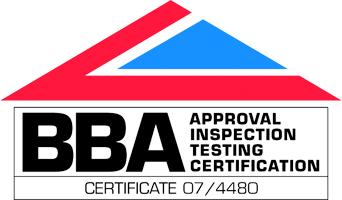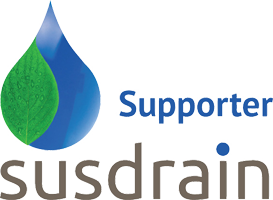Author Archives: admin
Recycled aggregate and below-ground SuDS
Recycled aggregate could be used more frequently for installation of below-ground attenuation assets, so gaining an understanding of the standards and best practice for this material is worthwhile.
Substituting recycled aggregate for virgin aggregate helps retain natural resources for future generations and can come with cost benefits. Although there is an opportunity to do this with below-ground attenuation assets in sustainable drainage systems (SuDS), contractors often choose to go with what they know – which is the ‘safe’ route of virgin aggregates.
In specifying recycled aggregates, designers and contractors should be aware of the relevant standards, together with any technical guidance from the manufacturer of the attenuation product. BS EN 13242 (+A1:2013) sets out the properties required for aggregates produced from natural, manufactured or recycled materials for hydraulically bound and unbound materials for civil engineering works. Reputable suppliers will provide recycled aggregate with a CE mark to demonstrate conformity to the standard.
Different product manufacturers may have additional requirements for recycled aggregate which is to be used in below- ground SuDS attenuation systems to ensure that it performs its intended functions. For instance, ADS Pipe’s technical guidance for recycled aggregate for its StormTech system calls for a 20/40mm aggregate which is clean, crushed and angular, with less than 5% fines. The reason for limiting fines is that the void space between the aggregate needs to be preserved to allow for the storage and movement of the water through the matrix of aggregate.
Specifications should set out an average porosity for the aggregate. Porosity is the volume of voids over the total volume; this is sometimes confused with void ratio which is the volume of voids over the volume of solids which can lead to installed systems not meeting design requirements.
Other factors to consider when selecting recycled aggregate include the nature of the ground and the groundwater and whether there are any potentially aggressive substances present. Sulphites carried in groundwater, for example, could react with recycled concrete aggregate and degrade it over time.
Different types of below-ground attenuation systems require different proportions of aggregate to manufactured product. Crates deploy small amounts of aggregate around their perimeter, large-diameter pipes and arch-shaped attenuation products use a greater proportion of aggregate.
With arch-shaped attenuation products, the aggregate around the arches has a dual purpose. It provides structural support, with the elliptical shape of the arches forming the aggregate around them into stone arches and structural columns, transferring the loads away from the chambers into the stiffer material surrounding them. The aggregate also provides additional storage volume which contributes to the efficiency of the attenuation system in terms of its water storage capability.
Recycled aggregate will not necessarily have lower embodied carbon than virgin aggregate, which tends to be supplied from quarries close to the point of installation. Recycled aggregate can come at a lower cost than its virgin counterpart, again depending largely on transportation distances.
Generally speaking, attenuation products requiring a higher aggregate-to-product ratio tend to have a lower overall carbon footprint per cubic metre of storage than those requiring less aggregate-to-product. • Stuart Crisp is UK manager at Advanced Drainage Systems (ADS)
Underground SuDS: derisking the future with standards, certifications and approvals
Anyone involved in the design, installation or adoption of below-ground SuDS attenuation assets should be doing their due diligence to ensure they are fit for purpose, says Stuart Crisp of ADS.
Below ground attenuation devices for sustainable drainage systems (SuDS), such as crates, are often considered a commodity. The tendency can be to fit the lowest cost option, given the volume of water required by the engineer’s design.
This may function very well on day one. But how can the ultimate asset owner be sure it will function as intended 10, 20 or more years down the line?
This is the question that any SuDS adopting body will be asking, when Schedule 3 of the Flood and Water Management Act 2010 comes into force in England, making SuDS for new developments mandatory. SABs must assess what maintenance and repair costs might be, in order to agree the commuted sum that a developer pays when handing over the asset.
An important part of the due diligence required for below ground SuDS attenuation devices is to check that the products selected meet all the necessary standards, certifications and approvals. To do that properly, it is important to deep dive into the detail of how manufacturers claim that their products comply.
Standards and certifications.
The starting point for any construction product to be used in the UK is that it must, bylaw, have a CE mark or a UKCA mark–although the date from which the UKCA mark will be required has recently been pushed back from June 2025 for at least two years. Next, products must conform to the relevant standards in terms of both functional performance-which is governed mainly by the evaluation, management and testing of the product’s material properties, manufacturing processes and dimensional tolerances–and the structural design process. These two distinct requirements can sometimes be found in two different standards or alternatively in separate parts of the same standard, depending on the product type and material.
British Standards (BS) are the most well known in the UK but in some cases, a harmonised standard, accepted by multiple nations, could apply, which would be designated BS EN or BS ISO in the UK. Note that there cannot be more than one standard covering the same scope in any territory.
For innovative solutions, where a product standard does not exist, manufacturers must take a different approach.
Some choose to cherry pick clauses from different standards in an attempt to demonstrate fitness for purpose, but this is not a reliable approach.
The responsible route is to put the product through an evaluation conducted by a recognised certification body such as the British Board of Agrément (BBA), Water Research Centre (WRc) or British Standards Institution (BSI). This process effectively assesses the key elements that a standard would cover, and checks that the product meets the claims of the manufacturer.
Given the rigour of the testing and checking involved, such approvals understandably take some time to process. ADS was delighted to formally receive its BBA certification for its StormTech range of arch-shaped below ground SuDS attenuation devices in November this year.
Approvals
Across the UK, there are a range of different asset owners that approve SuDS. In England, water companies require developers to follow OFWAT’s Design and Construction Guidance (DCG) for sewers. In addition, the Lead Local Flood Authority (LLFA) must also evaluate and approve drainage designs.
In Scotland, Scottish Water is the adopting body, and SuDS must meet the requirements of Sewers for Scotland 4th edition. The Scottish Environment Protection Agency (SEPA) must also be satisfied that the treatment train is adequate to protect water quality.
In Wales, Schedule 3 of the Flood and Water Management Act was adopted in 2019. The requirement of SABs is based on the Welsh Government’s Statutory Standards for Sustainable Drainage Systems (SuDS) and the CIRIA SuDS Manual, C753.
In a small number of cases, independent adoption bodies such as Icosa Water and Independent Water Networks (IWNL) may take on responsibility for SuDS maintenance. Their requirements are likely to be a version of the DCG.
For devices installed to serve a highway, there is a separate need to demonstrate compliance. For the strategic road network, National Highways’ Design Manual for Roads and Bridges (DMRB) is the most significant document, with local highways authorities often following suit. Products not recognised within National Highways’standards can be used through the Departure from Standards process.
Of course, the compliance requirements touched on in this article are just one part of the due diligence process for SuDS. Below ground attenuation devices can be rendered unfit for purpose due to other parts of the SuDS system such as inadequate treatment capability, or poor maintenance regimes. Systems such as StormTech,where water treatment comes as an integral part of the device, can provide a straightforward way to alleviate that risk.
SuDS design and water quantity: back to basics. Part I. – November 2024
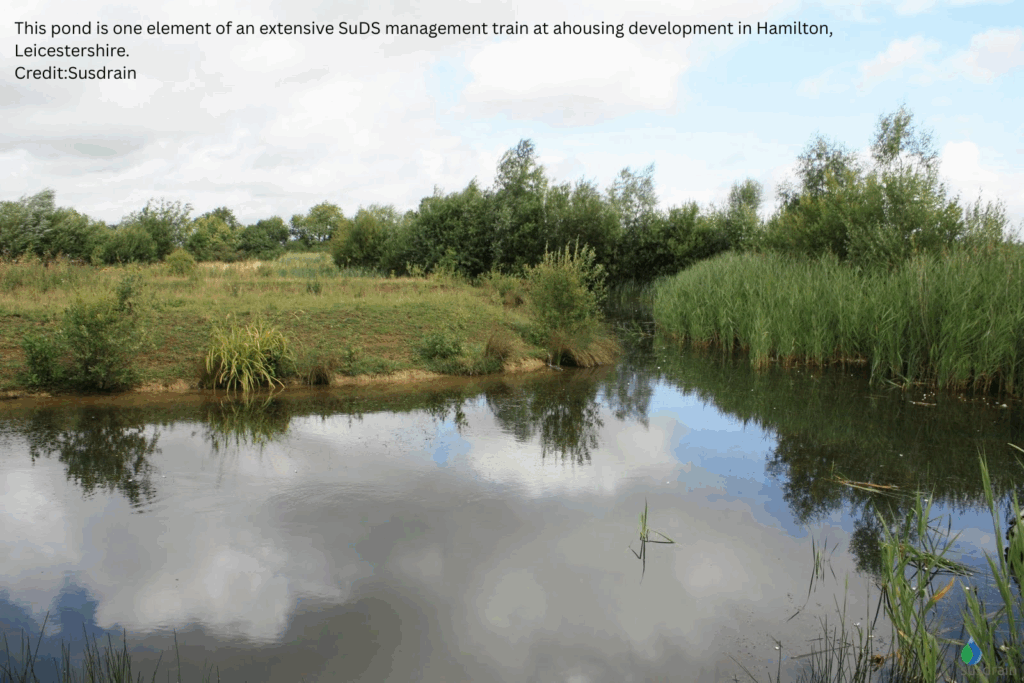
In this, the first of a two-part series considering the fundamentals of SuDS, Stuart Crisp, UK Manager, Advanced Drainage Systems asks if nature-based solutions are an automatic choice when specifying SuDS designed to mimic nature.
The weather so far this year has provided a stark reminder of the challenges we face due to heavy and intense rainfall. January’s Storm Henk brought a month’s rainfall in four days to some areas, leading to flooding, the worst of it in the Midlands. And in April, the impacts of Storm Kathleen and Pierrick caused flooding across the country,especially on parts of the south coast.
Ten English counties experienced their wettest September on record and for Bedfordshire and Oxfordshire, September 2024 was the wettest calendar month the counties have experienced, in a series dating back to 1836.
Much of this flooding is exacerbated by urban development. By replacing green fields and vegetation with hard surfaces–roads, roofs and driveways–we change the way and rate at which surface water flows out of an area or catchment.
A good SuDS design for water quantity aims to mimic the flows of water from developed sites so that they are as close as possible to what would have happened,had there still been a greenfield site there. That means throttling the flow of water–in other words providing storage and releasing it later, more slowly–so that it is not rushing so quickly into sewers and water courses and overwhelming them, leading to flooding.
Many policy documents from organisations that currently adopt SuDS–typically Scottish Water in Scotland, the county or unitary authority in Wales or a water company in England mandate natural or green SuDS, often prohibiting the use of proprietary or grey SuDS.
While green SuDS, such as swales and ponds are the right solution for some developments, a blinkered approach may not offer the optimum solution; capital costs could ramp up, it may fail to provide the lowest environmental impact and potentially lead to longer-term problems and higher maintenance and operation costs.
Although designing for water quantity and the urgent need to reduce the risk of flooding is vital, there are the other pillars of SuDS to think about too: water quality, amenity and biodiversity. Previous articles in Drain Trader’s June 2023 and February 2024 issues, looked at water quality issues and what type of management trains were best suited to different types of development, depending on pollutant loads.
Operational and maintenance costs for SuDS schemes are often overlooked and ignored, but the promised implementation of Schedule 3 of the Flood and Water Management Act 2010 in England will shed a harsh light on these. SuDS Approval Bodies (SABs), likely to sit within local authorities, will require robust information about inspection and maintenance regimes and expected costs over the lifetime of a development.
An article in Drain Trader’s March 2023 edition looked at why poorly thought-out SuDS can lead to shorter service lives and higher operational costs than those expected from the design.
Mimicking nature
On a greenfield site, the first 5mm of rain would not typically generate surface runoff, it would infiltrate into the ground, evaporate or transpire through the leaves of plants.Then, when water flows from the surface of a catchment and exceeds the capacity of the receiving water body, the additional volume of water would spill over onto the floodplain.
When we develop on that catchment to add impermeable surfaces, such as roofs, roads and hard standings, the amount of surface water runoff generated can increase dramatically. In a dense, urban environment, 95% of the rainfall could flow off the catchment as surface runoff, increasing the volume of water that reaches watercourses or sewers. It is also likely that the peak flow will be higher and come sooner,than had it remained a greenfield site.
CIRIA C753 The SuDS Manual gives a graphical illustration of this. Figure 3.1, in Chapter 3 which deals with design for water quantity, shows hydrographs for the discharge rates of surface water for an area in three situations: when it is greenfield; when developed without flow attenuation; and when developed with flow attenuation.(Figure 1 shows a similar graph, courtesy of SUSDRAIN).
The amount of water that a SuDS system will need to attenuate or store, and the rate at which the water should be discharged is the subject of the hydraulic design for that system. For those that want to go back to first principles, these are set out in BS EN16933-2 Drain and sewer systems outside buildings–Design–Part 2: Hydraulic design.
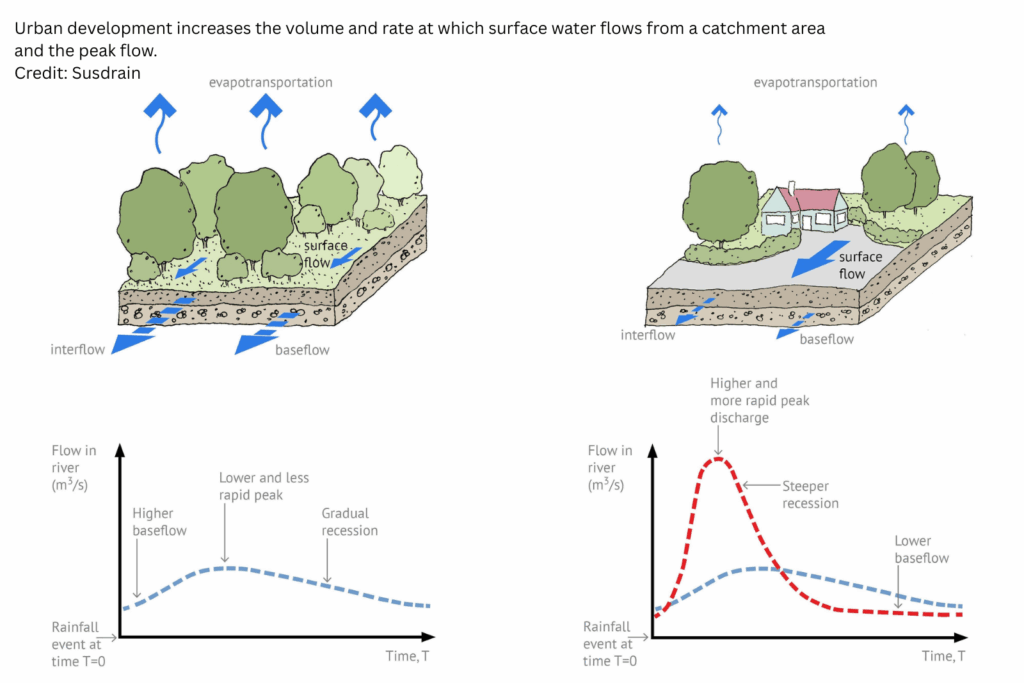
Today, however, many drainage engineers rely on software such as Info Drainage and Micro Drainage (AutoDesk/Innovyze), Flow (Causeway) and Site3D. But this ‘blackbox’ approach to calculations can mean that designers don’t have the opportunity to properly understand the assumptions and coefficients that have been used–and the impact on water quality based on the SuDS components selected to satisfy the hydraulic design–which may lead to suboptimal performance.
In a SUSDRAIN factsheet from March 2014, Assessing attenuation storage volumes for SuDS–another useful resource for designers–author Anthony McCloy explains the risks of this approach:
“Don’t expect exact answers from the calculation process, it is a usable approximation that can provide acceptable solutions for design. Most of the inputs are based on statistics and calibration factors; therefore we can only ever achieve an approximation of how the system will behave in reality. The results of calculations and modelling need to be used alongside professional judgement to provide the design.”
Ten years later, this point is just as relevant as ever, perhaps even more so as design software is more widely used, with newer generations of engineers never called on to design from first principles. McCloy also advises that those assessing potential SuDS,such as SABs, must also have a basic understanding of first principles of storage volumes and hydraulic design so that they can carry out their statutory duties.
Water storage toolbox
There are many ways that we can create storage for excess surface water. Storage can be online, meaning that flow enters the element, passes through and out the other side or offline where flow enters and exits via the same point. A design could include both online and offline storage where, for example, flow above the 1-in-30-year return period is directed offline to accommodate the 1-in-100-year event.
Vegetative or surface-based solutions include ponds, detention basins which are dry until excess water needs to be accommodated and swales which can be used to accommodate volume, as well as to communicate flow between SuDS elements and for infiltration.
Ponds can be an attractive choice, potentially ticking boxes for all the four pillars of SuDS. From a water quantity perspective, they must have sufficient capacity to cope with rising water levels during higher rainfall events throughout their design lives. Any sediment entering the pond will settle out quickly, since the sediment particles soon reach terminal velocity allowing them to settle to the bottom of the pond.
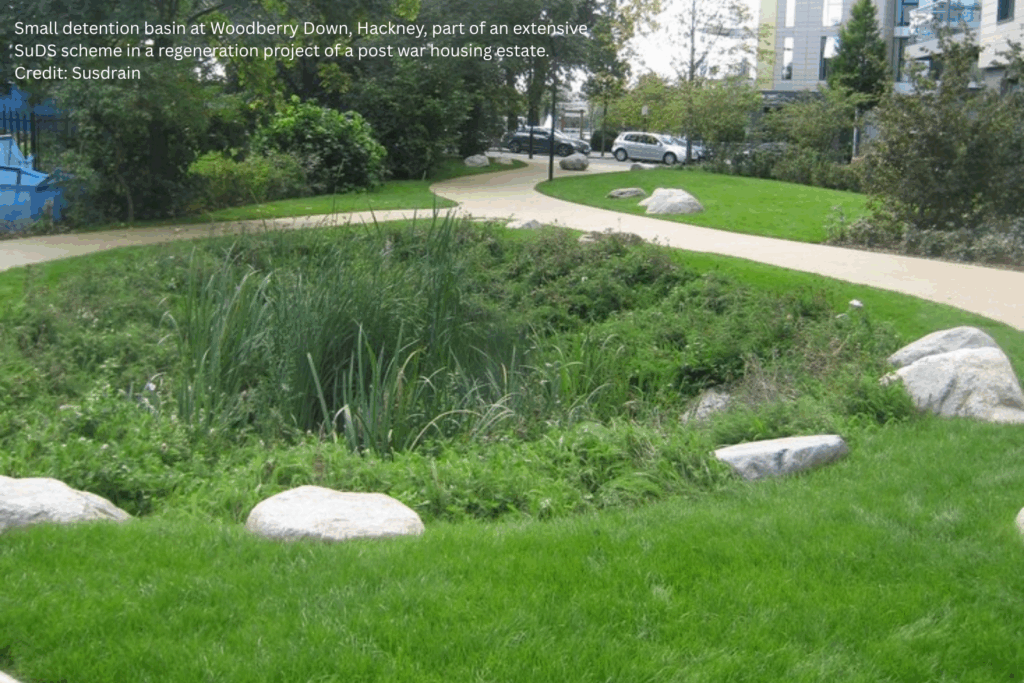
As an asset owner or adopter, it is important to anticipate the amount of sediment that will settle out over time, because the accumulated sediment must be somehow removed at intervals to allow the pond to provide sufficient storage volume. One issue that is sometimes overlooked in the design of ponds is providing safe and cost-effective means of accessing the pond to remove sediment when required.
A recent story from Gloucestershire illustrates the costs involved. Local residents petitioned Gloucester City Council in January this year to desilt Saintbridge pond in Abbeydale because it produces a foul smell in the summer and the silt is negatively impacting on water quality and habitats. The council refused, saying that it was only 15 years since it last desilted the pond and that the operation would cost £700,000.
Commenting on the story, Jo Bradley, director of operations at Stormwater Shepherds,pointed out the error of not having installed an upstream sediment separator at the same time as the pond. “If a manufactured sediment separator had been included, it could have been emptied every year, costing maybe £700-£1000. That would have cost up to £20,000 over the 20-year cycle and avoided the £700,000 cost that they are now facing.
”Bradley pointed out that by bringing in heavy plant every 20 years, removing vegetation and sediment, the pond’s habitats and inhabitants are disturbed, negatively impacting on nature. And she added that the sediment in the pond could well be contaminated with toxic, bio-accumulative pollutants and tyre-wear particles. CIRIA’s manual says that a sediment separator or sediment forebay should be installed upstream of every pond. And, depending on the pollutants likely to be washed into the pond with the surface water, other pre-treatment could be needed. Without this, there is a danger that wildlife will be attracted to the pond, only to suffer harm from the pollutants within it.
This point was illustrated by researchers at Glasgow University, who compared SuDS ponds with natural ponds and found that pollutants were higher in some of the SuDS ones, negatively affecting amphibian breeding and development. A paper published on the research issues this warning:
“The function of SuDS and other urban drainage systems to sequester pollutants increases their potential to be ecological traps by advertising false cues of suitable habitat.
”In the next issue, Stuart considers what the options are available when considering proprietary attenuation solutions.
Underground SuDS attenuation: avoiding failure
Stuart Crisp, UK manager of Advanced Drainage Systems (ADS), highlights the possible causes of failure that would-be asset owners should be aware of.

There’s a challenge with underground attenuation assets. By their very nature, they are buried. Given that third-party inspection during construction and post-construction surveys and snagging are not always undertaken, this can result in mistakes going unnoticed and a higher risk of failure.
As we anticipate the implementation of Schedule 3 of the Flood and Water Management Act 2010, which will mandate the use of SuDS for new developments in England and set up bodies to adopt them, this issue becomes ever more pertinent.
SuDS Approving Bodies (SABs) must be assured that they are minimising the adoption of avoidable liabilities along with the underground SuDS elements.
SABs should ensure that they know why design decisions were made, how products were chosen and whether they were re-specified by the contractor, how quality and technical checks were made and recorded, and the implications on performance, durability and maintenance throughout the asset’s service life.
Design
Designers should consider the performance and behaviour of an asset across its whole lifecycle including long-term and short-term loading, maintenance requirements, operation costs and end-of-life. To produce a robust specification for an underground attenuation device, they must understand how standards and guidance apply to structural performance, material behaviour, product design, manufacture and installation methodology, since all these factors contribute to the asset’s integrity and durability.
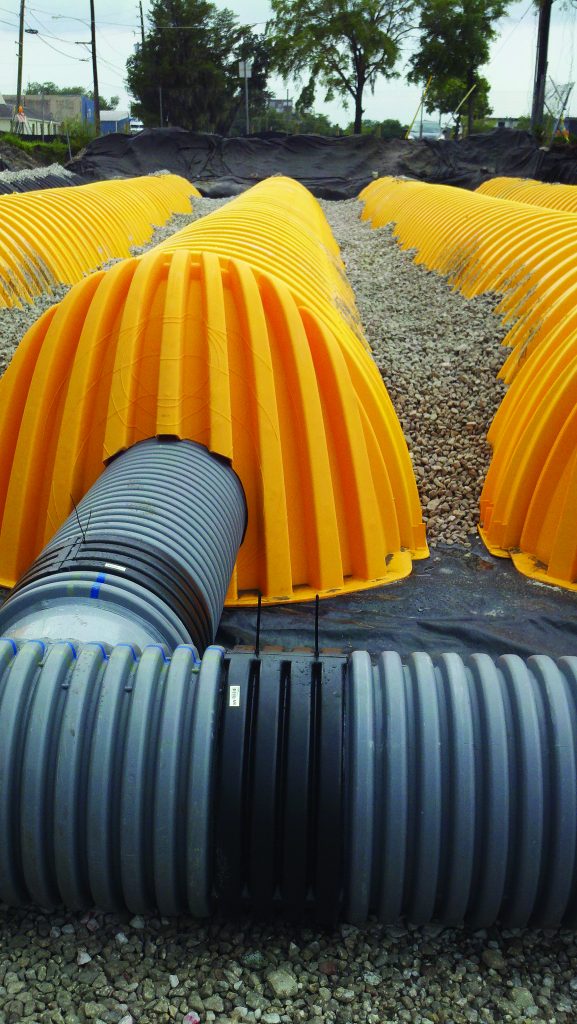
The SuDS system design must take into account the amount, concentration and types of pollutants to be expected in the storm water runoff and the respective treatment flow rates for the components used in the management train, as well as hydraulic flow rates. Failure to take maximum treatment flow rates into account can compromise the efficiency of the treatment device, and hence water quality passing through the system.
The design must also consider maintenance and inspection regimes, including cost, frequency, access for vehicles and the type of equipment that will be deployed.
Product selection
The decision on the type of underground SuDS attenuation may ultimately fall to an engineer, developer, contractor or even a sub-subcontractor. However, those making decisions about product choice may not have all the knowledge they need to understand the implications.
For instance, upstream sediment capture devices may be removed or down-sized because there isn’t a perceived risk of a high pollution load but if using a hard-to-clean attenuation system, such as many types of geocellular crates, that would mean that the size of the crate tank should be increased by 10% as its volume will reduce over time due to sediment build-up (ref CIRIA C753 The SuDS Manual clause 21.5.3 and table 21.2).
De-specification to choose cheaper products can increase the risks of failure. An alternative below-ground SuDS attenuation product may appear to perform in the same way, but adopting bodies and asset owners should check that they meet all the relevant standards and that they have undergone the appropriate certification and testing.
Installation
Poor workmanship can often be the reason for failure. An easy-to-install system saves time for the installer and reduces risk for the contractor and asset owner. Systems with multiple components and fixings require higher levels of skill and supervision and introduce more risk because time pressures, or parts missed-out during assembly, can lead to mistakes.
Connections and interfaces are important too. The ‘gut feel’ of how an operative thinks something should be installed may not match-up with what the designer and the manufacturer actually require.
Maintenance
The frequency and ease of maintenance of SuDS system will come under close scrutiny once SABs are preparing to adopt assets because these factors will influence the commuted sum that a developer must hand over on adoption of the asset.
In addition to an overall design that provides good access for vehicles and people, the design of the product is important. Asset owners must think about ease of cleaning sediment from the tank and any upstream treatment devices, and whether standard cleaning or specialist equipment is required.
Avoiding failure
Due diligence for any would-be asset owner must cover decisions made at all stages of the design and delivery of an underground SuDS attenuation device.
Failure to do this risks failure of the system through poor performance, or higher maintenance and repair costs than forecasted.

Stuart Crisp is UK Manager for Advanced Drainage Systems (ADS). ADS is America’s largest manufacturer of thermoplastic corrugated drainage pipes and a specialist in water management systems. StormTech has a long and successful track record with over 50,000 below ground SuDS attenuation system installations using in excess of 3m units.
Originally published in Water magazine October 2024

